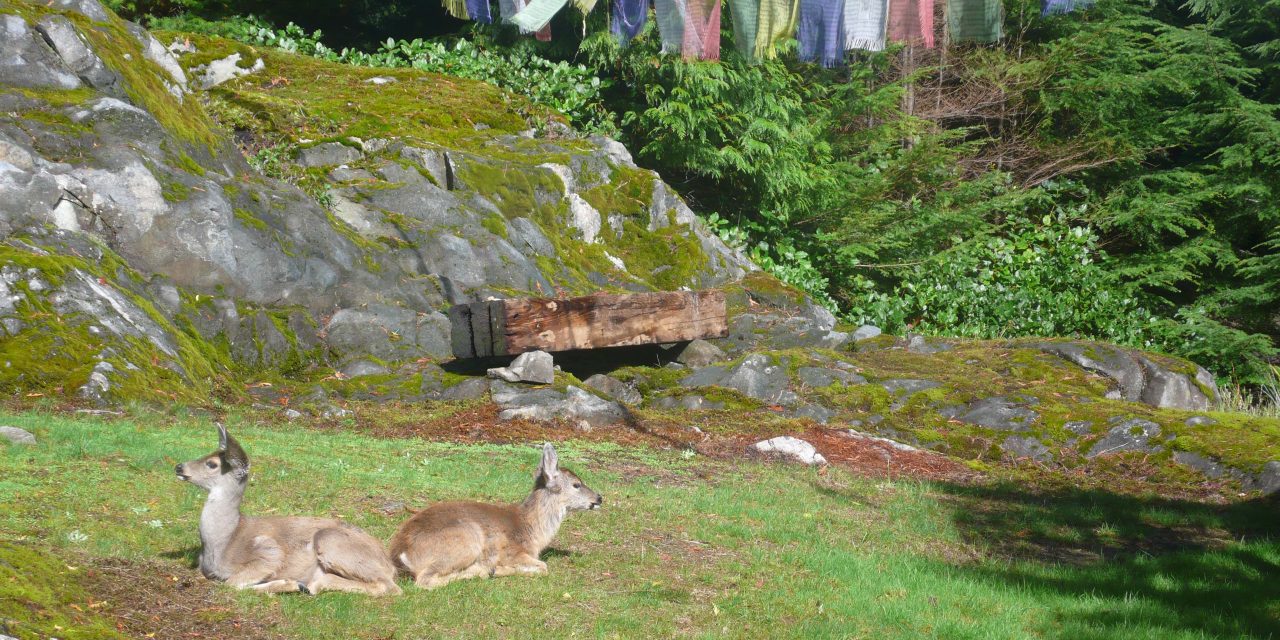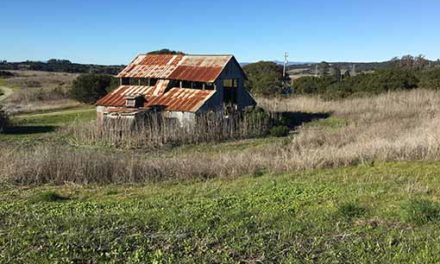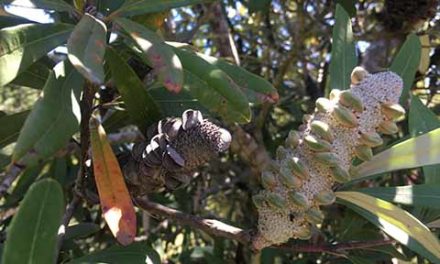Something to keep in mind…
We can’t give in to despair
…
We have to go out and look for the hope
…
we need to inspire us to act
…
and that hope begins with a conversation, today.
…
Katherine Hayhoe

TIME TO TALK CLIMATE
If you saw someone, say, your grandchild, best friend, mother, about to get hit by a truck, wouldn’t you do everything you could to get them out of the way.
The climate crisis is here and is unraveling faster than anyone expected.
It is not about the year 2100. It is about the year 2020 and 2030. Now. The science is clear and yet people are not mobilizing to do everything possible to save the planet.
Many people, huge numbers of us, are still blissfully unaware of the Climate Crisis and the science behind it. And the prime reason is that it is not being talked about, especially on the local media. We know that they are owned by a small number of large corporations and must toe the corporate line.
Quite simply put, they are muzzled. So… It’s time to start talking to folks.
The most important thing you can do to fight climate change: talk about it
[VIDEO]
How to talk about climate change: 5 tips from the front lines
We Forum
I have spent almost my entire working life in climate science and policy, social enterprise, government, and now philanthropy. Over time, I have seen public communication as increasingly important. Why? Greenhouse gas emissions need to decrease fast if we are to have any chance of keeping global temperature rises below dangerous levels, and it is hard to see how this will happen without greater, and more urgent, engagement with society.
We need more people talking about climate change more often, because we need to break out of the current climate echo chamber.
How to talk about climate change with family and friends over the holidays
Climate Change News 12-20-19
Recent research, which I led for climate communications charity Climate Outreach, suggests how to have a constructive conversation about climate change using the mnemonic REAL TALK:
Respect your conversational partner and find common ground
Enjoy it
Ask questions
Listen, and show you’ve heard
Tell your story
Action makes it easier (but doesn’t fix it)
Learn from your conversational partner
Keep going and keep connected
The principles may seem obvious, but trying them out can be a profound experience – particularly in anxious and divisive times.
Respect and connection
The twin ghosts of blame and shame haunt climate conversations, particularly among Westerners. It may feel reasonable – and hard to avoid feeling judgemental of your sister-in-law’s five holidays abroad this year – but the evidence shows that fear, guilt, shame and obligation compromise the quality of the connection between two people.
Instead, like all other conversations, a good climate conversation is about building a connection between people, based on mutual respect and a willingness to listen to one another – even if it means swallowing your tongue occasionally. The #TalkingClimate handbook we produced suggests trying phrases like “I find that really hard as well….” or “We don’t agree on this but…”
Shrinking budgets, rising seas: How local newsrooms can cover climate change
Grist 12-23-19
The three journalists said scientific expertise, good training, access to data, and — no surprise —funding are all essential pieces of the puzzle. But they also shed light on what it takes to make climate coverage work in their communities in the long term.
Don’t engage in “both sides-ism.” “For too many decades,” Morales said, “news directors and newsroom managers, because of their journalistic training, have been fixated on the idea that every story that’s presented on air needs to show two sides.” The scientific method doesn’t work that way, he said. Instead of analyzing the mountain of evidence supporting climate change, local coverage needs to cover “how fast things are changing, the links between the observed symptoms and causes of rising temperatures, and move on to ‘what do we do about this?’”
Think about climate change in a holistic way. “There are niches that aren’t being filled,” Morris said. There’s a “tremendously unique opportunity,” he said, to localize global climate issues. That means making connections for readers between things like transportation and climate change. How will a vote on a new public transportation bill, for example, impact the area’s carbon footprint? Journalists need to be thinking about the big picture when they’re covering the small stuff. …
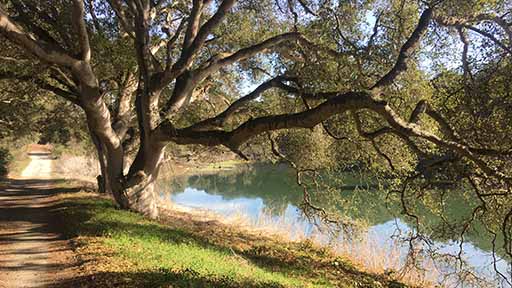
HOT AIR NEWS ROUNDUP
This Week’s Highlights
2019 wasn’t just protests and Fleabag: it was the year a climate truth bomb dropped
The Guardian 12-19-19
More wine was poured and more people commented on the great weather (except for a sommelier who confessed sotto voce that he felt afraid), and influencers posed in the gloom on the jetty and by the swimming pool, seeing but refusing to see what was all around them: this red-raw sun, that dirty brown sky.
The cognitive dissonance would have been funny had I not been so scared.
It brought to mind F Scott Fitzgerald, a writer who understood more than most that decadent parties prefigure societal collapse. Had his novel The Great Gatsby been written now, the scene that day in Point Piper would not be out of place.Returning to shore in the haze, we could have been excused for thinking we were crossing the Styx – the mystical Greek crossing into the Underworld – and in this heightened state the day seemed more than the sum of its parts. Instead it served as both an elegy for the lost world that had disappeared beyond the haze and a portent of the world to come.
Food at risk as third of plants face extinction
Climate News Network 12-18-19
Botanists have made a new census of terrestrial plants – only to find that with nearly 40% of them rare, or extremely rare, this may put food at risk. And a second team of researchers, in a separate study, has established that some of these rare or vanishing species could include the wild relatives of some of the planet’s most popular vegetables.
The two studies matter.
The first underlines yet another reason for new and determined conservation strategies to preserve the extraordinary natural variety and richness of life – the shorthand word that scientists use is biodiversity – already under pressure from the explosion in human numbers, the destruction of natural habitats and the looming catastrophe of climate change driven by rapidly rising global temperatures.
And the second study is simply a matter of the next lunch or dinner: many rare plants are survivors with the resources to adapt to change. In a fast-changing world, crop breeders may need to go back to the wild relatives to look for the genes that will keep the commercial carrots, courgettes, pumpkins and chili peppers on the grocery shelves.
Is This The Only Way To Curb Global Warming?
Oil Price 12-20-19
A new report from the United Nations environment programme (Unep) finds that on current pledges, the world is heading for a 3.2 degree rise. Although G20 nations collectively account for 78 percent of all emissions, only five members have committed to a long-term emissions target.
Of these, the UK and France are the only two to have passed legislation confirming their commitments in law. Germany, Italy and the EU28 are currently in the process of passing laws to this effect. The UN’s intergovernmental panel on climate change warned that going beyond the 1.5 degree rise agreed under the Paris Agreement in 2015 would increase the frequency and intensity of climate impacts.
UN secretary-general António Guterres said: “For ten years, the Emissions Gap Report has been sounding the alarm – and for ten years, the world has only increased its emissions. “There has never been a more important time to listen to the science.
Failure to heed these warnings and take drastic action to reverse emissions means we will continue to witness deadly and catastrophic heatwaves, storms and pollution.” The report calls for all nations to substantially increase their Nationally Determined Contributions (NDCs), as the Paris commitments are known, in 2020.
Deep trouble: can Venice hold back the tide?
The Guardian 12-10-19
The next day, another acqua alta of 1.56 metres broke a record, flooding 75% of the city, giving Venetians a real scare, but now, a year on, that has paled in the face of a new record flood recorded on 12 November 2019, of 1.87 metres, the highest in more than 50 years, flooding over 85% of the city.
Lesser record highs hit in the following days. The flood caused millions in damage, and two deaths – one man who tried to restart a water pump was killed by electrocution, and another was found dead in his home. The extended flooding has disheartened many among the city’s depleted population of 53,000, with some now thinking that there is no future for Venice. …
Venice’s Mose project, selected after decades of study and political controversy from a number of alternatives, is unprecedented in design: separate dams at the Lido, Malamocco and Chioggia port openings, with a total of 78 rectangular flood gates over the three openings, each attached to the bottom by massive hinges.
At the Lido opening, an island has also been constructed in the middle of the channel as part of the dam structures. When required, the hollow steel barriers – each as big as six or seven railway carriages laid side by side – are filled with air, causing them to float up to 45 degrees. Together they form a barrier designed to hold back the tide coming from the Adriatic. When the tide subsides, the air is let out and they sink back on to the bottom, out of sight and allowing the flow of water and naval traffic to resume. Berti called the design “courageous and innovative …
There is no magic solution. This is a good compromise.” In the wake of the latest floods, the government promised money to accelerate Mose and related efforts. …
Global warming is already out of control, Fersuoch added, which means that “in 50, or even 20 years, the lagoon will have to stay shut, and then how will it function? We need to think about that, about how to create the system, the engineering, ways to activate the tides artificially. It won’t be easy,” she said, adding that these questions should take precedence over Mose, “but I see no one talking about them.” Perhaps the most recent floods will change that.
James Hansen & Dan Galpern – Sue the ******, Solve the Problem
UPFSI 12-8-19
Today we discuss with Dr. James Hansen and his legal advisor Dan Galpern, the approaches to reducing our carbon emissions by legal actions. Worth a watch. One successful lawsuit in the form they are describing could really put a crimp in the fossil fuel industry’s plans to kill us all for the sake of profit.
[VIDEO]
Top scientists warn of an Amazon ‘tipping point’
Washington Post 12-20-19
Deforestation and other fast-moving changes in the Amazon threaten to turn parts of the rainforest into savanna, devastate wildlife and release billions of tons carbon into the atmosphere, two renowned experts warned Friday.
“The precious Amazon is teetering on the edge of functional destruction and, with it, so are we,” Thomas Lovejoy of George Mason University and Carlos Nobre of the University of Sao Paulo in Brazil, both of whom have studied the world’s largest rainforest for decades, wrote in an editorial in the journal Science Advances.
“Today, we stand exactly in a moment of destiny: The tipping point is here, it is now.” Combined with recent news that the thawing Arctic permafrost may be beginning to fill the atmosphere with greenhouse gases, and that Greenland’s ice sheet is melting at an accelerating pace, it’s the latest hint that important parts of the climate system may be moving toward irreversible changes at a pace that defies earlier predictions. …
The Amazon also is warming at an accelerated rate. An analysis by The Washington Post of global temperature changes found that almost the entirety of Brazil has warmed by more than 1.5 degrees Celsius, or 2.7 degrees Fahrenheit, since the late 1800s. …
“The definition of ‘tipping point’ can be quite broad,” Brando said, so it is difficult to say whether the Amazon has reached what scientists would call a point of irreversible change. But this much is clear, he added: “We’re not moving away from that tipping point. We’re probably driving very fast toward that direction.”
Higher temperatures and deforestation are drying out parts of the Amazon and posing a fundamental threat to the rainforest.

ADAPTION AND RESILIENCE
Mealworms provide plastic solution
PHYS ORG 12-19-19
Tiny mealworms may hold part of the solution to our giant plastics problem. Not only are they able to consume various forms of plastic, as previous Stanford research has shown, they can eat Styrofoam containing a common toxic chemical additive and still be safely used as protein-rich feedstock for other animals, according to a new Stanford study published in Environmental Science & Technology. The study is the first to look at where chemicals in plastic end up after being broken down in a natural system—a yellow mealworm’s gut, in this case. It serves as a proof of concept for deriving value from plastic waste. “This is definitely not what we expected to see,”
Ørsted and partners secure funding for H2RES project; offshore wind power to produce renewable hydrogen for road transport
Green Car Congress 12-23-19
The partners will build a 2MW electrolysis plant with appurtenant hydrogen storage. The plant will use electricity from offshore wind turbines to produce renewable hydrogen for buses, trucks and potentially taxis. The daily hydrogen production is expected to total around 600kg, enough to power 20-30 buses, while also making testing its use in trucks and taxis possible. The funding awarded to the H2RES project is the largest among the 53 projects which have received funding from the EUDP in this second 2019 call for applications.
How buildings stayed cool before air conditioning was invented
Yale Climate Connections 12-20-19
A century ago, homes were not designed with air conditioners in mind. Instead, architects devised other ways to keep people cool in the hot summer months.
Jill Gotthelf is a New York state-based architect and preservation expert who restores historic buildings. She says many of them were designed to allow breezes in and to allow hot air out. “In houses this worked with the large open stairwells in the building,” she says, “and then usually windows at the upper part of the stairwell that worked with what we call a chimney effect to let breezes go through and go up the building.” Porches and roof overhangs were often designed to provide cooling shade in the summer, and thick stone walls helped keep the indoor temperature down. “So all of these systems made them less dependent on mechanical systems,” Gotthelf says.
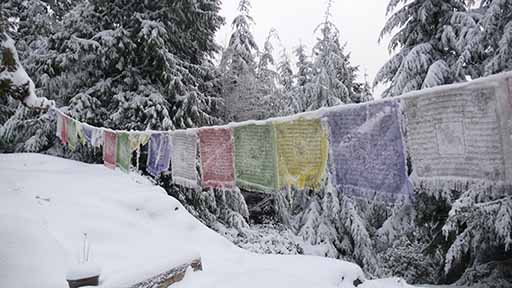
LEGISLATION, ELECTIONS & POLICY
Andrew Ramanoff for Senate
Andrew Ramanoff
You and I face a crisis unlike any in human history but we can change course. How? By demanding respect for science and reason, by treating the climate crisis as an existential threat—and by electing leaders who will too. Watch our new video and chip in as much as you can to spread this message today.
[VIDEO]
‘My moment’: the activists fighting climate crisis and winning elections
The Guardian 12-15-19
Deregulation may benefit big business polluters, including some of Donald Trump’s biggest donors, but the public health threat disproportionately affects millions of black, poor and Native Americans and Alaskans. But amid mounting frustration with political leaders, a growing number of community activists are running for office on climate and environmental justice platforms in local and state elections – and winning. “This was about about my kid’s health, and my health, and I didn’t have the luxury of someone else taking care of that,” said Eric LaBrant, who was elected in 2015 as a commissioner of his local port authority in the Pacific north-west. Such candidates “are deeply engaged because they have firsthand experience of climate and environmental issues in their communities”, said Alex Cornell du Houx, co-founder of Elected Officials to Protect America, a group working with local and state representatives on these issues. He added: “They learn quickly once elected and have the capacity to make a big difference.”
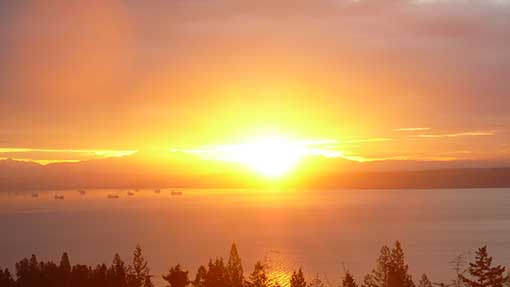
THE FIRES
Australian fires bring growing global climate crisis into stark relief
WSWS 12-23-19
The need for volunteers 24 hours a day, months on end, is going to make life very, very difficult. There is no doubt we need a national look at this. We need a serious plan.”
Greg Mullins noted: “One of the problems for resourcing firefighters at the moment is that we lease large aircraft from the USA. Other countries are after them, like Chile. We have to get in early to get enough of them.”
Traditionally, both aerial and ground firefighting resources have been able to be shifted from state to state, and even from country to country. Australian firefighting crews often deploy to the US, for example, and vice versa. Under conditions in which major blazes are taking place simultaneously, this is increasingly not possible.
The fire season began this year in Australia in September, when California was ablaze.
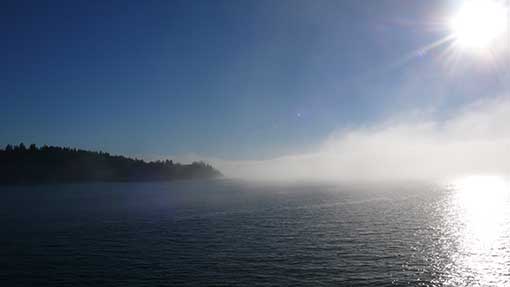
THE ARCTIC
Dispatch from Antarctica: A reporter’s trip reveals wonder, awe and tragedy
Energy News 12-20-19
I was in Antarctica with 100 women from around the world in science, technology, engineering, math and medical (STEMM) fields as part of an expedition convened by the Australia-based initiative Homeward Bound, with the goal of building women’s leadership to create a more sustainable world. For most of the women on the trip, climate change and its impact on the plants, animals, and ecosystems they study and love is a constant scourge never far from their minds. …
The stark clarity of our surroundings also made it seem it should be possible to cut through the metastasizing consumerism, suffocating bureaucracy and political inertia that have prevented us from addressing climate change.
FOSSIL FUELS
The Plastics Pipeline: A Surge of New Production Is on the Way
e360 Yale 12-19-19
Companies like ExxonMobil, Shell, and Saudi Aramco are ramping up output of plastic — which is made from oil and gas, and their byproducts — to hedge against the possibility that a serious global response to climate change might reduce demand for their fuels, analysts say.
Petrochemicals, the category that includes plastic, now account for 14 percent of oil use, and are expected to drive half of oil demand growth between now and 2050, the International Energy Agency (IEA) says. The World Economic Forum predicts plastic production will double in the next 20 years.
The Fracking Industry’s Methane Problem Is a Climate Problem
DeSmog 12-20-19
While carbon dioxide — deservedly — gets a bad rap when it comes to climate change, about 40 percent of global warming actually can be attributed to the powerful greenhouse gas methane, according to the 2013 IPCC report. This makes addressing methane emissions critical to stopping additional warming, especially in the near future.
Methane is shorter-lived in the atmosphere but 85 times more potent than carbon dioxide over a 20 year period. Atmospheric levels of methane stopped increasing around the year 2000 and at the time were expected to decrease in the future.
However, they began increasing again in the last 10 years, spurring researchers to explore why. Robert Howarth, a biogeochemist at Cornell University, recently presented his latest research linking the increase in methane to fossil fuel production, with fracking for natural gas, which is mostly methane, likely a major source. …
While the oil and gas industry makes claims about wanting to reduce methane leaks, it has been aided by two simple facts that help hide the scale of the problem: Methane is odorless and invisible to the naked eye. Difficult to detect, methane leaks in the oil and gas production system weren’t obvious until people like Sharon Wilson at Earthworks began bringing specialized infrared cameras to production facilities and helped make those leaks visible.
But it isn’t just unintentional leaks. Much of the methane released is intentionally “vented” to the atmosphere in areas without the processing plants, pipelines, and other expensive infrastructure to make use of it.
WEATHER
November 2019: Earth’s Second Warmest November on Record
Scientific American 12-16-29
November 2019 was the planet’s second warmest November since record keeping began in 1880, said NOAA’s National Centers for Environmental Information (NCEI) on December 16.
NASA also rated November 2019 as the second warmest November on record, a scant 0.04°C behind the record-setting November 2015. Global ocean temperatures during November 2019 were the second warmest on record, according to NOAA, and global land temperatures were the eighth warmest on record.
Global satellite-measured temperatures in November 2019 for the lowest 8 km of the atmosphere were the warmest in the 42-year record, according to the University of Alabama Huntsville (UAH) and RSS.
Scientists fear surge in supersized bushfires that create their own violent thunderstorms
The Guardian 12-20-19
PyroCB storms are feared by firefighters for the violent and unpredictable conditions they create on the ground. PyroCBs are able to generate their own lightning strikes, mass downdrafts of air, gusty winds and even hail blackened with soot. The plumes generated from pyroCBs can influence the atmosphere at heights of up to 15km. Embers still hot enough to start new fires can be shot out of a pyroCB at distances of 30km from the main fire. …
PyroCB fires can have devastating and dramatic consequences. Victoria’s deadly Black Saturday conflagration in February 2009 created its own lightning that caused fires 100km ahead of the main fire front. …
Dr Simon Heemstra, manager of planning and predictive services at the New South Wales Rural Fire Service, said: “What’s happening now is that we are noticing an increase in incidence of these sorts of events. With a changing and heating climate, you are going to expect these effects.” He said pyroCB fires were characterised by violent “mass flaming” that “puts lives at risk, whether those are firefighters or the community in the path of these events”.
The advice given to firefighters in NSW before and during a pyroCB event is to “make sure they have a safe refuge”. He said: “It instills fear – the thought of a fire creating a thunderstorm that’s throwing embers and lightening in front of it. It creates a dangerous situation and we take them very seriously.”
HEALTH
Australia: Toxic air from bushfires rated a “public health emergency”
WSWS 12-23-19
On December 10, the Sydney air quality index, a measure of air pollution, was 11 times higher than that considered “hazardous.” This resulted in 234 presentations to emergency departments with asthma and breathing problems, almost double the average number of 130.
It is the fifth week that paramedics and emergency departments have had an increase in the numbers of patients with respiratory problems. In one week alone, between December 5 and 11 there was a more than 30 percent increase in presentations to emergency departments for asthma and breathing difficulties and 40 percent increase in calls to NSW Ambulance for the same conditions.

WILDLIFE & THE ENVIRONMENT
Let It Be: Why We Must Save Alaska’s Pristine Tongass Forest
e360 Yale 12-20-19
The Trump administration has announced its intention to open more than half of the Tongass — 9.5 million forested acres — to development. First roads, and then most anything after that: clear-cuts, dams, lodges, etc.
To do this, the U.S. Forest Service must exempt the Tongass from a key conservation initiative, known as the Roadless Rule, which in 2001 banned new roads on nearly 60 million acres of untouched national forest lands in 39 states.
It’s Time to Stand For The Trees
Stand for the Trees
HS2 is an environmental disaster. Even more so in the face of the Climate and Ecological Emergency declared by Parliament. I stand with leading environmental organisations already demanding a rethink of HS2, including Client Earth, Friends of the Earth, Greenpeace, The Ramblers, RSPB, The Woodland Trust, The Wildlife Trust, WWF and Extinction Rebellion.
Even The National Trust recently wrote to the government with their concerns over HS2. Together we are many millions strong and will not allow our natural history to be destroyed.
[VIDEO]
Ability of re-grown Amazon forest to combat climate change ‘vastly overestimated’, study suggests
Independent 12-23-19
The capacity of re-grown areas of the Amazon rainforest to draw carbon dioxide from the atmosphere and combat climate change may have been “vastly overestimated”, scientists fear. The forest is a gigantic carbon sink, drawing the greenhouse gas from the atmosphere. Cleared areas that are re-planted are known as secondary forest, and have been seen as key to fighting climate change, researchers at Lancaster University said. But a new study has found that those areas held just 40 per cent as much carbon dioxide as sequestered by parts of the Amazon untouched by humans, casting doubt on their ability to aid in mitigating the crisis. And at the same time, global warming appeared to be hampering the re-growth of secondary forest.
Grazed and confused?
FCRN
This report is the collaborative effort of individuals at the Universities of Oxford, Aberdeen and Cambridge in the UK; Wageningen University in the Netherlands; the Centre for Organic Food and Farming (EPOK) at the Swedish University of Agricultural Sciences (SLU); the Research Institute of Organic Agriculture (FiBL) in Switzerland; and the Commonwealth Scientific and Industrial Research Organisation (CSIRO), Australia.
All the participating organisations contributed intellectual and financial support to the project. The project was led by the Food Climate Research Network at the University of Oxford.The work is motivated by our desire to provide clarity to the often highly polarised debate around livestock production and consumption, and the merits or otherwise of different production systems.
At its most extreme, we see an opposition between those who view grazing ruminants as cause of (most of) our planetary woes, and those who believe the exact opposite, arguing that ‘grassfed’ cattle offer a route to environmental – including climatic – salvation. Of course most people do not hold these extreme views but many, including those with influence, are also somewhat confused.
Should we eat meat and other animal products? Or should we not? If we do, is beef bad and chicken better? Or is it the other way round? Is grassfed good for the planet or bad? …
Leaving aside for the moment any conclusions about the potential of livestock to help solve our environmental problems, the livestock systems that operate today cause an enormous amount, and many kinds of, environmental damage.
To raise the animals we eat and use, we have cleared forests, driven species to extinction, polluted air and waterways, and released vast quantities of GHG emissions into the atmosphere. The rearing of animals has literally transformed the face of this earth.
Of course animal farming has also brought humanity huge benefits:305 which is why we rear them and why the sector is growing today. It provides food that is highly nutrient dense, much liked and culturally significant. Farm animals can convert biomass that humans cannot eat into food that we can. They provide income, livelihoods and in some parts of the world livestock keeping constitutes a survival strategy. In days and places where population densities were or still are sufficiently low and land abundant, livestock played, and continue to play, an important role in transferring nutrients from grasslands and onto cropland via their manure.
But this role is now diminishing. Land constraints and population growth mean we can no longer rear animals in traditional ways while also continuing to fulfil an ever-growing demand for animal products.
That reality has triggered the development of new production systems that may be more environmentally efficient in some respects306 but that also generate a whole new set of problems.
It is, of course, possible to rear a limited number of animals in ways that cause less damage. This report, which focuses on just one environmental concern – climate change – has found that well-managed grazing in some contexts can cause carbon to be sequestered in the soil – and at the very least can provide an economic rationale for keeping the carbon in the ground.
It is important to identify what and where those contexts are, a point discussed further in our research recommendations.
Marine climate impacts are intensifying
Climate News Network 12-20-19
Marine climate impacts are starting to make their mark on marine life at almost every level, according to a range of entirely unrelated scientific studies published in the last month. Baltic codfish – a valuable commercial catch – have steadily become smaller, scrawnier and less valuable because of the loss of oxygen in ocean waters as a consequence of an increasingly warmer world.
Changes in climate over the last two decades have cost the fishermen of New England their jobs: their numbers have fallen by 16% since 1996 as the total catch has fallen, along with fishermen’s incomes. The change may be linked to a natural ocean climate cycle, but nobody can be sure the decline will not continue as waters warm in response to ever higher atmospheric levels of carbon dioxide, driven by ever greater use of fossil fuels to power modern economic growth.
That steady rise in carbon dioxide means that marine waters are also becoming steadily more acidic, and this could be bad news for the sharks. Laboratory experiments suggest they can respond to short-term changes in water chemistry, but in the long term increasingly acidic waters can begin to dissolve not just the characteristic skin scales of the shark family, but the teeth as well.
Genetic variation gives mussels a chance to adapt to climate change
Science Daily 12-20-19
Existing genetic variation in natural populations of Mediterranean mussels allows them to adapt to declining pH levels in seawater caused by carbon emissions. Biologists show that mussels raised in a low pH experimental environment grew smaller shells than those grown at normal pH levels, but the overall survival rate of mussels grown under both conditions was the same.

PROTESTS • EXTINCTION REBELLION • RESISTANCE
Jane Fonda on the urgency of climate action: ‘This is it, folks. This is the time’
Energy News 12-18-19
Despite intermittent hoarseness, the message the Oscar-winning actress, activist and fitness guru delivered indoors Tuesday afternoon was strong, clear and firm: “I beg people to ratchet up their action on climate,” she told a sold-out, rapt audience at the National Press Club. “This is it, folks. This is the time.”
The Californian has basically moved to the nation’s capital for four months to lead Fire Drill Fridays. Demonstrators at the recurring event are demanding that political leaders address what they define as a climate emergency roiling the planet. Civil disobedience is the focus on Fridays. Thursdays are dedicated to teach-ins on climate-related topics such as human health, forests and holding fossil fuel corporations accountable.
Fridays for Future
In 2019, Teens Helped Prove Gen Z Is Unstoppable
HufPo 12-21-19
Thanks to Generation Z ― which Pew Research Center defines as those born after the year 1996 who are 22 or younger by the end of 2019 ― this year was a little more bright. From their wokeness on social media to their on-the-ground activism, the generation of young adults helped elevate issues often ignored or not taken as seriously by older generations (most notably: climate change).
As the decade comes to an end and millennials age into their late 20s and 30s, this next generation is showing their might in a variety of ways. Here’s a look at some of the many notable teens and young adults who showed the kids are ― yes, still ― all right.
Greta Thunberg
Greta Thunberg’s refusal to take any flights since 2015 has spawned a whole ‘train-bragging’ movement, and it’s ushered in a new era for luxury travelers around the world
Business Insider 12-19-19
To minimize her environmental footprint, Thunberg hasn’t flown since 2015, opting for greener travel options such as trains and a 60-foot solar-powered yacht.
The so-called “Greta Effect” has spread throughout Sweden and Europe, inspiring travelers to “brag” about their eco-conscious train travel. A Swedish Facebook group called “Train Vacation” dedicated to discussing how to travel by train through Europe has seen its membership soar to 107,000 this year, up from 3,000 in 2017. This renewed interest in rail travel has contributed to an uptick in rail investments across Europe, especially overnight services. Sweden is creating a public tender to add overnight train services to other countries; Austrian Federal Railways is pouring $221 million into renovating sleeper cars; and Italy’s Trenitalia is spending $334 million on new trains and updates, Boris Groendahl and Catherine Bosley reported for Bloomberg. …
Emphasis on the environment is fueling the resurgence of luxury train travel. Capitalizing on the train-bragging sentiment, luxury travel tour operator Original Travel added 2020 train-only journeys to destinations including Italy, Canada, and Japan and is also developing train-based trips through Europe,
Angelina Villa-Clarke reported for Forbes. Meanwhile, Classic Collection, a UK-based personalized luxury travel company, told TTG Media that it is adding luxury train trips through Spain on the Al Andalus. Links Travel & Tours, another UK-based travel company that specializes in tailor-made trips to Asia, told TTG that they have developed dedicated rail tours through Japan and China at the request of their customers.
Can You Change for Climate Change?
Scientific American 12-23-19
To us, however, Thunberg’s environmental actions are more impressive than her words. Thunberg crossed the Atlantic Ocean aboard a zero-emission sailboat to attend September’s climate talks in New York, eating freeze-dried food, not showering, and eschewing other comforts of air travel to spend 15 days on the high seas.
Thunberg’s sacrifice epitomizes the challenge underlying climate change: if global warming is to be curbed, comfortable lifestyles in developed countries must be amended. Put another way, it doesn’t matter how much uproar an activist’s speech creates because it distracts from the fundamental fact that the only way to save our planet is to change how we live.
Policy makers have long struggled with how to encourage uptake of more eco-friendly behaviors, such as eating fewer animal products, reducing air-conditioning use, flying less and taking more public transportation.
A die-hard assumption is that when people are presented with information about how to curb climate change—for instance, via energy labels (Energy Star), public-service announcements or media messaging (“Save Water, Take Shorter Showers”)—they will adopt greener habits.
Extinction Rebellion
JOIN XR USA: on their website
XR NEWSLETTERS & EVENTS: on their website
XR USA: on YOUTUBE
NEW XR TRUTH TELLER SITE: on TRUTH TELLER.LIFE
“Calling all concerned Citizens: Tell the world what you know”
Humanity has the know-how to avert catastrophic climate and ecological breakdown. Yet we’re failing to heed the scientific warnings and put them in place. Why aren’t we adopting emergency measures the world over? And what are the near-term consequences of inaction? Do you know something that would help reveal what’s really going on?
Protesters dumped manure outside UN climate summit in Madrid
NY Post 12-16-19
Green activists dumped horse manure and staged a mock hanging outside the venue of a UN climate summit in Madrid on Saturday, airing their frustration at the failure of world leaders to take meaningful action against global warming. …
Twelve members of the group stood on melting blocks of ice, nooses drawn tight around their necks to symbolize the 12 months remaining until the next summit, when the Paris deal enters a make-or-break implementation phase.
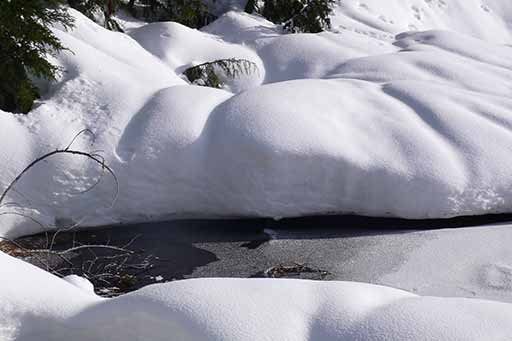
CLIMATE STUDIES
Study suggests global impact of obesity may be extra ~700MT/y CO2eq: about 1.6% of worldwide GHG emissions
Green Car Congress 12-23-19
All oxygen-dependent organisms on the planet produce carbon dioxide as a result of metabolic processes necessary to sustain life. Total carbon dioxide production from any species is linked to the average metabolic rate, the average body size and the total number of individuals of the species.
To assess the impact of obesity on the environment, researchers used the standard definitions of obesity (body mass index of greater than or equal to 30 kg/m2) and normal weight (body mass index of less than 25). Calculations were made of the extra emission of greenhouse gases (carbon dioxide, methane, and nitrous oxide) from the increased oxidative metabolism, the increased food production and consumption and the increased fuel used to transport the greater body weight of people with obesity.
Compared with an individual with normal weight, researchers found an individual with obesity produces an extra 81 kg/y of carbon dioxide emissions from higher metabolism; an extra 593 kg/y of carbon dioxide emissions from greater food and drink consumption; and an extra 476 kg/y of carbon dioxide emissions from car and air transportation.
Overall, obesity is associated with approximately 20% greater greenhouse gas emissions when compared to people with normal weight.
Rainwater in parts of US contains high levels of PFAS chemical, says study
The Guardian 12-17-19
New data shows that rainwater in some parts of the US contains high enough levels of potentially toxic per- and polyfluoroalkyl substances (PFAS) to possibly affect human health and may, if found in drinking water, in some cases be high enough to trigger regulatory action. PFAS chemicals appear in an array of everyday items, such as food packaging, clothing and carpeting.
Chemicals in this family are the subject of the film Dark Water, which chronicles the real-life efforts of a lawyer seeking to hold a polluting factory to account in West Virginia. Estimates pin the number of different PFAS variants at more than 4,700 but federal regulations so far target only two of them: PFOS and PFOA. Some of these chemicals have been known to cause serious health issues such as cancer, and immune system and thyroid problems. …
This isn’t the only recent such study of rainwater in the US. Last year, the North Carolina division of air quality began testing near the Chemours facility, which produces the PFAS GenX, and in February of this year, detected levels of GenX in rainwater higher than 500 ng/l.
The state subsequently gave the plant the go-ahead to install equipment to significantly reduce air emissions. More than a localized problem, PFAS compounds “are transported significant distances”.
Global Warnings
Paul Beckwith: “I declare a global climate change emergency to claw back up the rock face to attempt to regain system stability, or face an untenable calamity of biblical proportions.”
Kevin Hester: “There is no past analogue for the rapidity of what we are baring witness to. There has been a flood of articles … 2C is no longer attainable and that we are heading for dangerous climate change”
Magi Amma: We need to turn on a dime at mach nine!
…
Equivalencies:
• 1 gigatonne = 1 billion tons
• 1 gigatonne Carbon = 3.67 gigatonnes CO2
• 1 part per million (ppm) of atmospheric CO2 = 7.81 gigatonnes CO2
• 1 part per million of atmospheric carbon = 2.13 gigatonnes of carbon

